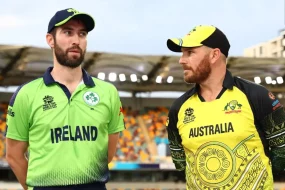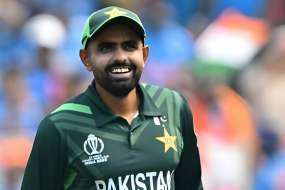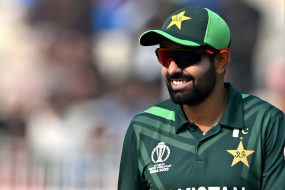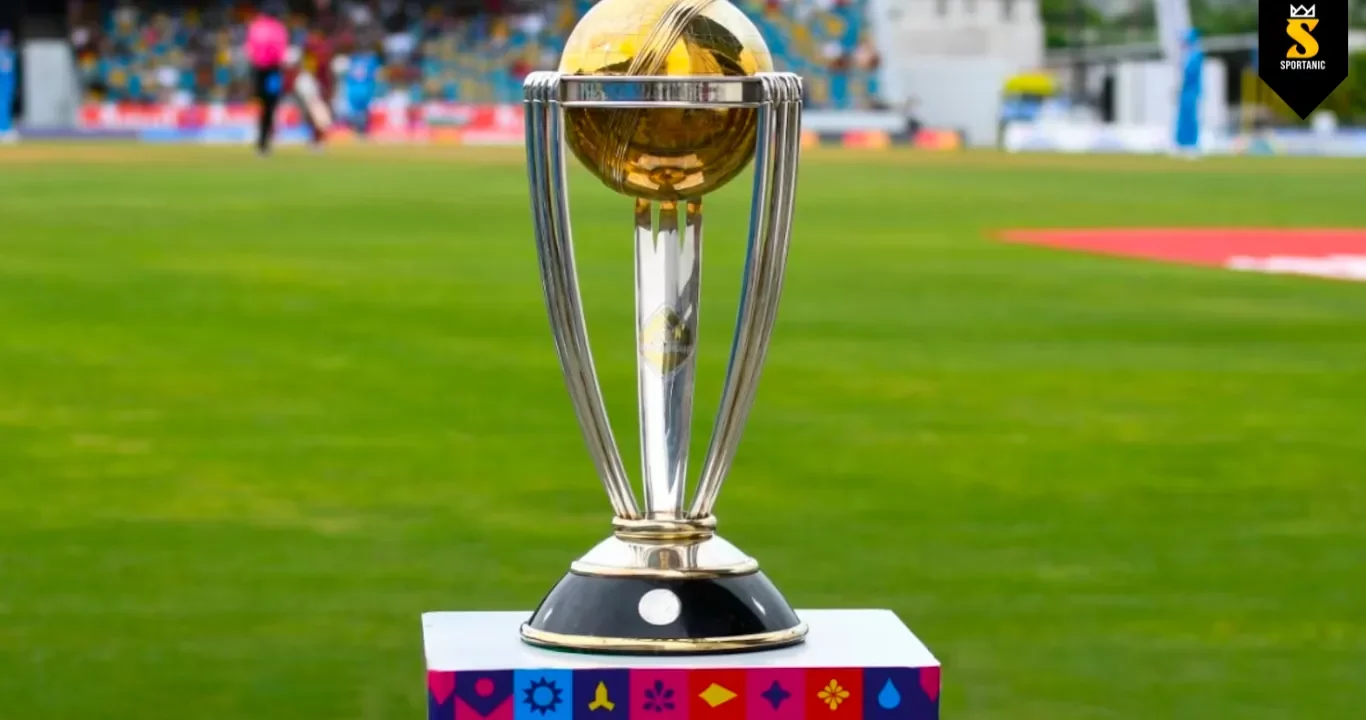
Nature tends to always be inclined towards those best fitted for survival. The laws of nature are cruel. You either eat or get eaten. You either replace or get replaced by those with better survival knowledge. The ODI format has been falling behind in this race for some years now. Every four years, the strongest defibrillators, known as the ODI World Cup among fans, are taken out to revive the moribund format. But, the momentary rejuvenation, not even partially reminiscent of its olden days, wanes soon. Leaving the question of the future of the format in ever-augmenting shadows of doubt. The ODI format’s stay at the hospice poses a question – Are we witnessing what can be the last ODI World Cup?
Birth of T20s and a Coup d’etat for ages
24 hours a day are enough, wise folks claim. Put aside 8 hours for sleep, 8 hours for work, and the remaining 8 hours for R&R. Although not quite when it’s an ODI match day. Cuts need to be made everywhere and anywhere possible. Unlike a 90-minute football game, a one-day international match demands you to stick around for 7-8 hours. Fans had no issue offering this sacrifice. At least not until T20 cricket breathed its first.
The shortest format rules the hearts (and pockets) with the revolution it brought along. A revolution, unlike any ODI cricket, can imagine even fathom. It is known famously as league cricket. T20 format surely has survival-in-wilderness-knowledge. That too in the wilderness, which in its entirety, once bowed down to a greater rival.
But overthrowing the rival was not difficult. The dilemma with the 50-over games is that they have neither the legacy of red-ball cricket nor do they offer the ecstasy and lucrativeness of a 20-over game. Humans are not very fond of staying moderate and so extremes are where they wander, slowly and surely. Forgetting a format that had the essence of both.
Lesser and lesser ODI cricket
The cricket calendar has never been as concentrated as it is now. Three months of IPL and myriads of other leagues keep the viewers on the edge to catch up with everything. All this comes as a bonus with bilaterals. Keeping track of all the cricket happening worldwide has practically become impossible. Interestingly, a big part of the cricket window per year is dedicated now only to the shortest format. Test matches, at least for three or four nations, also sneak in somehow. The problem comes, again, for ODI cricket.
This all has been happening since the start of last decade. Lesser and lesser ODI cricket matches are deemed to be a result of the success of 20-over. So much so that for a few years, ODI matches have only been given priority over its other two counterparts in World Cup years. Or at best, a year before it.
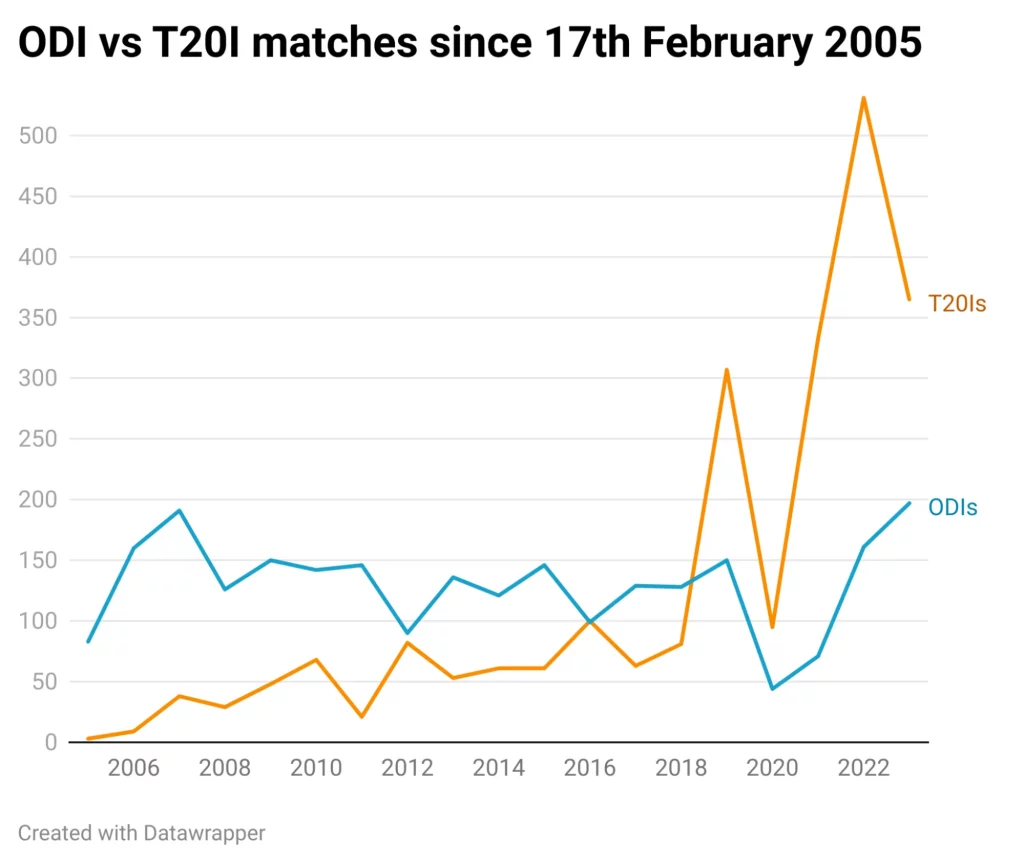
The decline of ODIs didn’t happen in a vacuum. T20Is, as mentioned earlier, played a significant role in this shift. So, how do T20I matches impact ODI cricket? It’s pretty straightforward. They steal the spotlight from 50-over games. T20 face-offs, unsurprisingly, wrap up in less than half the time it takes for a One-day match. They’re quick, more exciting, and don’t demand a whole day glued to your TV. As a result, more folks get hooked on watching them, making these games more appealing to the governing body. Something similar occurs in ODI cricket, but it only happens during the last phase of powerplay in both innings, drawing more viewers to the match during that period.
So that’s it? Is it REALLY the Last ODI World Cup?
All signs seem to be pointing in one direction – euthanizing ODI cricket once and for all. However, here’s where it gets a bit tricky: the International Cricket Council (ICC) isn’t quite ready to make that move just yet. Whether ODIs are deemed dull or not, the debate doesn’t quite grab the ICC’s attention. The reason is that the ODI World Cup continues to stand as the pinnacle event in the cricketing world, even in the face of year-round T20 league tournaments, annual T20 World Cups, and the constant presence of the Test Championship. The allure of the ODI World Cup remains untarnished, and it’s here to stay, at least for now.
An alternative proposal, put forth by the Marylebone Cricket Club (MCC) a few months back, suggests the idea of restricting ODIs to World Cups and the year leading up to it. However, this idea comes with its fair share of challenges, the most prominent being the potential lack of ODI experience among cricketers due to such a limitation.
Nonetheless, for the time being, the speculations regarding the ODI World Cup’s demise don’t hold much water. This will remain the case until the governing body of the sport conceives a potential rival tournament. Until that happens, the ODI World Cup will continue to be the most coveted trophy in the cricketing world.




